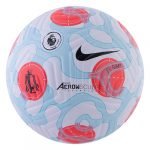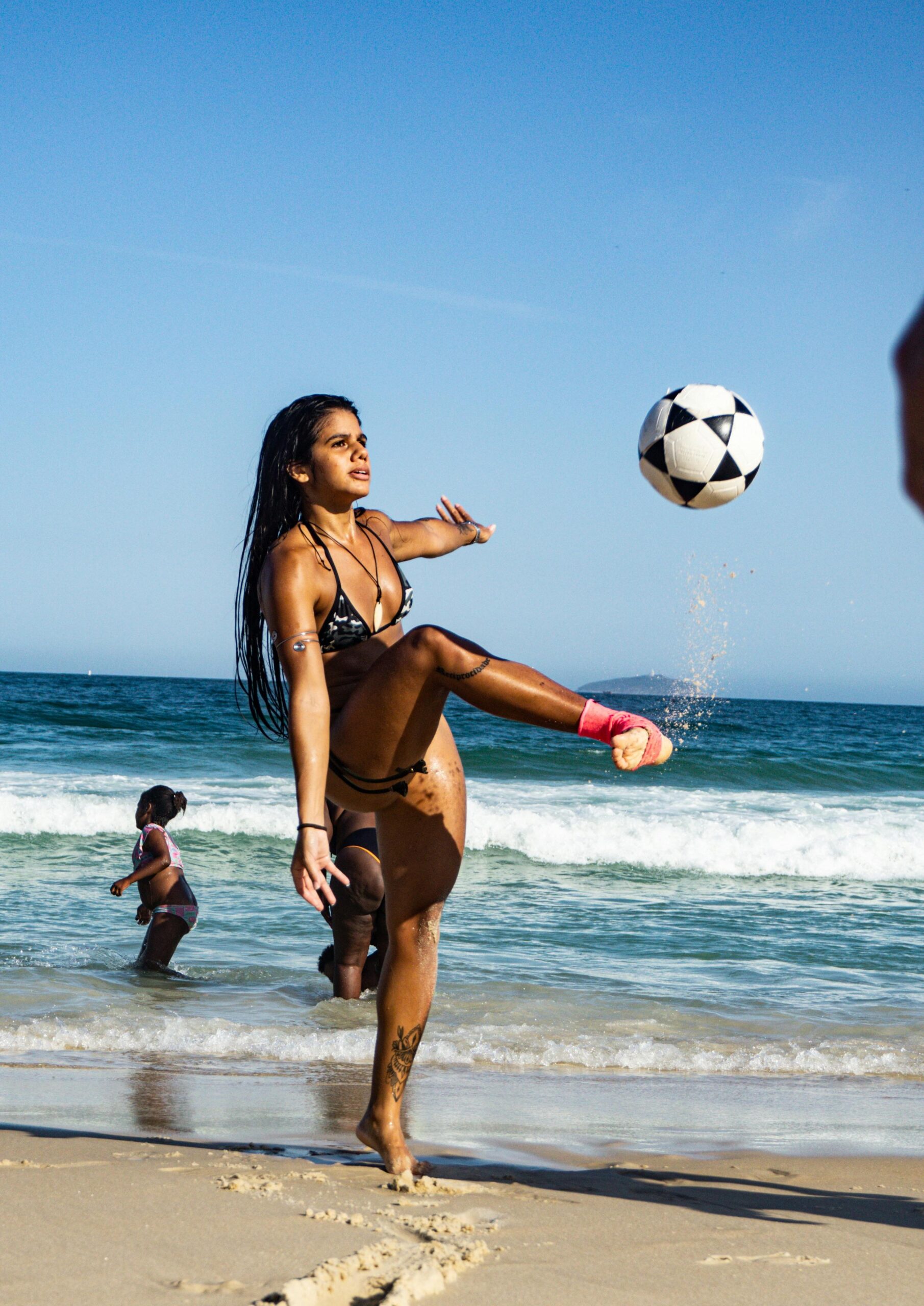Looking to enjoy soccer in a different way? Maybe you’re gearing up for a friendly kickabout or envisioning yourself dominating the sandy shores of beach soccer. Whatever your soccer adventure, it’s crucial to match your games with the right types of soccer balls.
Football comes in all shapes and sizes, with games played on a variety of surfaces, from lush fields to concrete playgrounds. Each game has its own unique set of rules and demands, calling for a specific type of soccer ball to match. For instance, beach soccer requires a softer touch for barefoot play, while street football on concrete necessitates a more durable ball that can handle rough surfaces. And don’t forget about futsal, where a smaller, heavier ball is key to navigating the fast-paced indoor game.
Here we’ll explore the wide array of soccer balls tailored for different styles of play. Whether you’re gearing up for a casual game with friends or preparing for a competitive futsal match, we’ve got you covered.
Types of Soccer Balls
Premium Match Soccer Balls
A Premium Match ball will usually be FIFA approved, as are most “Match Balls”. FIFA approval or certification is the highest ranking a
Match Soccer Ball
A Match ball still maintains high quality and a match-worthy standard. A Match ball is very similar to a Premium Match ball; however, the construction of the ball is slightly different. Some high school and college teams use match balls, which are often NFHS or NCAA approved. Therefore, any match or event hosted by one of the above organizations will require an approved Match ball. A Match ball will typically be a size 5.
adidas World Cup Omb ball
The adidas World Cup Official Match Ball has received an impressive overall rating of 4.6 out of 5 stars. Customers have expressed their satisfaction with this
However, there have been a few complaints about the ball losing air quickly or being too hard. Overall, the adidas World Cup Official Match Ball is highly recommended for

An NCAA Match ball will meet the following requirements: the circumference must be between 27″ and 28″ the weight of the ball must be between 16 ounces but not less than 14 ounces, and the outer layer must be leather or approved synthetic. NFHS approved Match balls have very similar, but more relaxed requirements, as an NCAA Match ball.
Training Ball
Training balls are built to be extremely durable and long-lasting. The purpose of a Training ball is for it to be used on a variety of field types and surfaces. They generally can be used for any skill level. Generally, they will be machine stitched and have a harder outside shell or layer. The internal material of the ball will also be thicker and stiffer, providing the longevity of the ball. The downside is the ball will be heavier and harder than a Match or Premium Match ball. The purpose of a Training ball is to make sure it will last during its rigorous use.
adidas Tango Glider Ball
Price range: $15-35
- Thermoplastic polyurethane material which is elastic and resistant to oil, grease and abrasion
- Size 5, smaller sizes 3 and 4 also available
- Requires pump for first use
- Sticker can be hard to remove from product

The amount of Training balls available on the market is wide-ranging, due to the multi-use that comes with a Training ball. The quality of a Training ball will also vary, dependent upon price and company. It is also important to note that Training balls range from size 3 to size 5. It is important to select the right quality for your level of play and intended use. The price of the ball does not always reflect quality. This also applies to the company. Look at various Training balls to find the best for you or your player.
Futsal Ball
Senda Rio Futsal Ball
Price range: $30 – 80
- USA Youth Official Ball
- Durable surface made for hard courts and wooden floors
- Reinforced bladder
- Machine stitched seams
- Fair trade certified

A Futsal ball is a very specific type of
Street Ball
Senda Freestyle Skills Ball
Price range: $40-50
- Size 4
- Tire-like rubber surface for added durability
- Low bounce level – more than futsal, but less than match balls
- Designed for freestyle, street or rugged terrains
- Fair trade certified

A Streetball should be made from durable materials to withstand the demands of playing on cement or concrete. In fact, some Street balls will have material that grips to the surface, allowing for increased skill and control. When purchasing a Streetball, one must be careful to do many marketing strategies indicating they the ball is made for Street, but really they are just traditional
Beach Soccer Ball
Senda Playa Beach Soccer Ball
Price range: $30-40
- Size 4 and 5 available
- 6 panel design
- 5mm foam under soft surface for barefoot soccer
- Machine stitched for stronger seams
- Pump required for first use

A Beach soccer ball can be found in a variety of colors and designs. Typically, they are very similar to traditional
Indoor Ball
Mikasa Indoor Series Soccer Ball
Price range: $40-50
- Size 2 ball
- Great for indoors
- Perfect for skills training
- Pump required for first use

An Indoor ball is designed to stick closer to the ground and have less bounce back. This is generally due to the indoor fields used, which consist of turf or hard surfaces. The fields are also usually smaller and consist of walls. This is another reason for the ball to have less bounce. Typically, an Indoor ball will be made of felt or suede-like material, providing for better control of the ball on the playing surface. It will also assist in making the ball move quicker across the playing surface.
Mini Ball
adidas Adult MLS Mini Soccer Ball
Price range: $12-18
- Suitable for all ages and genders
- Size 1 ball – it will fit in an adult palm
- Foam core means no inflation needed

A Mini ball is usually a size 1 or at times a size 2. These types of balls are generally novelty items. However, many times they are used to assist in advancing skill, touch, and joggling. They can also be beneficial for kids still not old or big enough to handle a size 3 ball.
Check out our curated selection of best soccer balls for 2024
FAQ
How many types of soccer balls are there?

There are several types of soccer balls, including training balls, match balls, futsal balls, indoor balls, beach soccer balls, and mini soccer balls.
Is there a difference between soccer balls?

Yes, there are different types of soccer balls available in the market. They can vary in terms of size, weight, material, and construction. Additionally, there are specific soccer balls designed for different playing surfaces such as grass, turf, or indoor courts. It’s important to choose a soccer ball that meets the requirements of your playing environment and personal preference.
Can we use any soccer ball for beach soccer?
While you can technically use any soccer ball for beach soccer, it’s generally recommended to use a specific type of ball designed for this unique environment. Beach soccer balls are typically softer and lighter than traditional soccer balls, with a slightly larger circumference to help them float on the sand and resist water absorption. These specialized balls also often feature a rougher surface texture to improve grip and control on sandy surfaces.
Can you use any soccer ball for concrete grounds?
While you can use any soccer ball on concrete grounds, it’s important to consider the surface’s impact on the ball and your playing experience. Concrete surfaces are much harder and rougher compared to traditional grass fields, which can lead to increased wear and tear on the ball. Using a standard soccer ball on concrete may result in quicker deterioration and potential damage to the ball’s outer covering.
To optimize your playing experience on concrete grounds, it’s recommended to use a more durable soccer ball specifically designed for hard surfaces. These balls are typically constructed with reinforced materials that can withstand the abrasiveness of concrete, ensuring longevity and performance. Additionally, balls designed for street football or futsal often feature a textured outer surface for improved grip and control on hard surfaces.
What is the difference between indoor soccer balls and futsal balls?
Futsal balls and indoor soccer balls may seem similar, but they differ in size, weight, bounce, and surface texture. Futsal balls are smaller and heavier with a lower bounce, designed for precise control and quick gameplay on indoor courts. They feature a textured surface for enhanced grip. Indoor soccer balls, on the other hand, are slightly larger and lighter, resembling traditional outdoor soccer balls but may have reduced bounce for better handling on indoor surfaces. While both are suitable for indoor play, choosing the right ball depends on the specific requirements of the game and playing surface.
